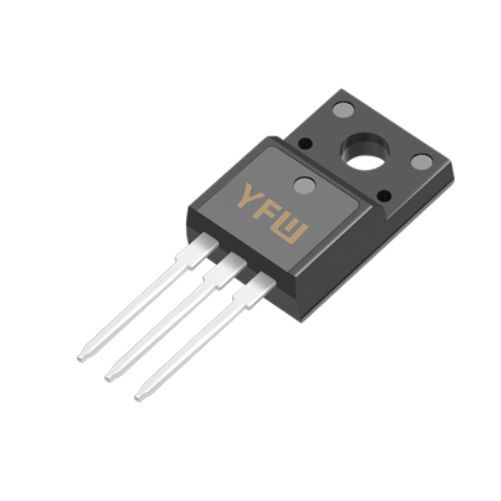Transistor Operating States and Key Parameters
Date:2025-06-20 Categories:Product knowledge Hits:840 From:Guangdong Youfeng Microelectronics Co., Ltd
Active State: In the active state, the transistor operates as an amplifier. For an NPN transistor, the base-emitter junction is forward-biased, and the base-collector junction is reverse-biased. This biasing allows a small base current (IB) to control a much larger collector current (IC), following the relationship IC = hFE × IB, where hFE is the current gain. The transistor maintains a linear relationship between input and output signals here, making it ideal for analog amplification tasks.
Cutoff State: When the base-emitter voltage is below the threshold voltage (typically 0.7V for silicon transistors), the transistor enters the cutoff state. Both junctions are reverse-biased, resulting in minimal current flow (IC ≈ 0). The transistor acts as an open switch, interrupting the current between the collector and emitter. This state is essential for digital logic "0" representation in switching circuits.
Saturation State: As the base current increases beyond the level required for the active state, the transistor enters saturation. Both junctions are forward-biased, and the collector current reaches a maximum value (ICSAT), no longer proportional to IB. The voltage between the collector and emitter (VCE) drops to a low value (saturation voltage, VCE(sat)), typically around 0.2V. Here, the transistor acts as a closed switch, suitable for digital logic "1" states and power switching applications.
Current Gain (hFE): Also known as the beta (β) value, hFE represents the amplification factor between the collector and base currents in the active state. A higher hFE indicates better current amplification capability, but it can vary with temperature and operating conditions. Designers must consider hFE tolerance to ensure circuit stability.
Maximum Collector Current (ICM): This parameter specifies the maximum continuous current the collector can handle without damaging the transistor. Exceeding ICM may cause overheating or permanent failure, making it critical to design circuits with proper current-limiting components.
Collector-Emitter Breakdown Voltage (V(BR)CEO): V(BR)CEO is the maximum voltage that can be applied between the collector and emitter without causing avalanche breakdown. It determines the transistor’s voltage-handling capability in high-voltage applications, such as power supplies or motor control circuits.
Collector Power Dissipation (PCM): PCM is the maximum power the transistor can dissipate without overheating, calculated as PCM = IC × VCE. Adequate heat sinking is necessary when operating near PCM to maintain safe temperature levels and prolong device life.
Frequency Response (fT): The transition frequency (fT) indicates the maximum frequency at which the transistor can amplify signals effectively. Beyond fT, the current gain drops to 1, limiting its use in high-frequency applications like RF circuits. Selecting a transistor with an fT higher than the operating frequency ensures stable signal amplification.
Mastering the operating states and key parameters of transistors is essential for optimizing circuit performance. Whether for signal amplification in audio systems or high-power switching in industrial equipment, choosing the right transistor based on its specifications—such as hFE for gain requirements, V(BR)CEO for voltage handling, and fT for frequency compatibility—ensures reliable operation.
At YFW, we offer a comprehensive range of high-quality transistors designed to meet diverse application needs. Our products undergo rigorous testing to ensure consistency in parameters like hFE and V(BR)CEO, providing engineers with the confidence to build robust and efficient electronic systems. Explore our transistor lineup at
www.yfwdiode.com to find the perfect component for your next project.

Previous:
Classification, Structure, and Principle of MOSFET
Next:
What is a high-frequency transistor? The composition, characteristics, principles, applications, installation, and distinction between high-frequency transistors and low-frequency transistors